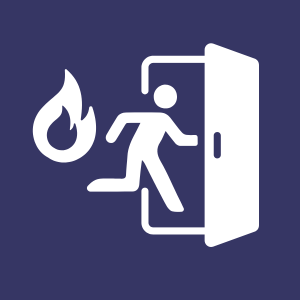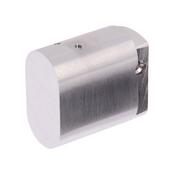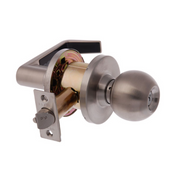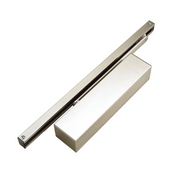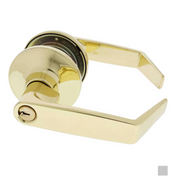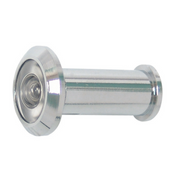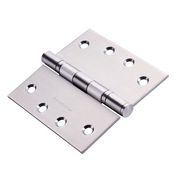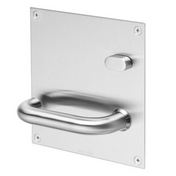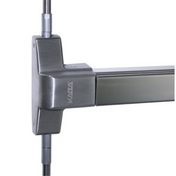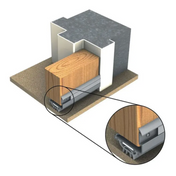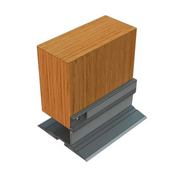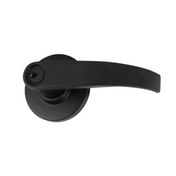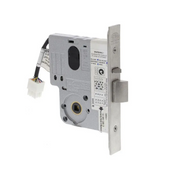A Comprehensive Guide by Doorpac
Fires can be catastrophic, leading to significant property damage and endangering lives. In such emergencies, preparation and safety measures are crucial. One essential element in the fire safety toolkit of any building is the fire door.
Also referred to as fire-resistant doorsets, these specialized doors are a vital part of passive fire protection systems, designed to prevent the spread of fire between different sections of a building.
Read on to discover more about the various types of fire doors, their functions, and the Australian standards that govern their testing and maintenance. By adhering to these standards, building owners and managers can significantly enhance safety and reduce the risk of fire-related disasters.
Types of Fire Doors
Fire doors are available in multiple styles, each catering to specific needs. They vary in materials, fire protection duration, and operational mechanisms:
- Automatic Doors: Integrated with a building's fire alarm system, these doors close automatically upon detecting smoke or fire, effectively containing potential hazards and minimizing human error.
- Self-Closing Doors: Equipped with self-closing mechanisms, these doors ensure they remain shut after use, crucial for maintaining fire safety. Hydraulic closers secure the door tightly to help contain fire.
- Hinged Doors: A common choice, hinged fire doors swing open and close easily. Their straightforward design typically requires less maintenance.
- Sliding Doors: Ideal for larger spaces or where swinging doors are impractical, sliding fire doors operate horizontally.
- Single vs. Double Fire Doors: Single fire doors serve standard openings, while double fire doors accommodate larger exits, both ensuring a tight seal when closed to slow or stop the spread of fire.
What Are Fire Doors Made From?
Fire doors are constructed from a variety of materials, each offering distinct advantages in fire resistance:
- Steel: Known for its strength, steel fire doors provide exceptional fire resistance and are commonly used in commercial settings to protect against fire and security threats.
- Aluminium: Lighter than steel, aluminium fire doors are treated for fire resistance and often feature thermal breaks to prevent heat transfer.
- Wood: Wooden fire doors usually contain fire-resistant cores and offer both functionality and aesthetic appeal, with effectiveness varying based on treatments and wood types.
- Glass: Fire-rated glazing can endure extreme temperatures and is often combined with other materials to allow visibility while maintaining safety.
Combining the right material with proper installation and regular maintenance is crucial for ensuring optimal performance during emergencies.
Fire Door Ratings
Understanding fire door ratings is essential for anyone responsible for building safety. These ratings indicate the level of protection a door offers during a fire.
Fire resistance levels (FRL) are expressed as three numbers that represent structural adequacy, integrity, and insulation. Each number indicates the duration (in minutes) the door can maintain that property when exposed to fire. For instance, an FRL of 120/60/30 signifies 120 minutes of structural adequacy, 60 minutes of integrity, and 30 minutes of insulation.
Typically, fire-rated doors and their frames do not provide structural adequacy, so an FRL might appear as "-/60/30". Fire resistance levels can vary depending on the application—communal areas often require higher ratings than sole occupancy units, ensuring adequate time for evacuation.
How to Identify Fire Doors
Recognizing fire doors is vital for safety. In Australia, you can identify fire doors by:
- Maintenance Tag: This tag provides key details, including the Australian Standard, FRL, manufacturer, and year of manufacture.
- Signage: Look for red or green signs indicating 'Fire Door' or 'Emergency Exit,' along with instructions like 'Keep Shut' or 'Do Not Obstruct.'
- Door Frame Gap: A maximum gap of 3mm between the fire door and the frame ensures effective containment of smoke and flames.
- Fire Resistant Hinges: These hinges are designed to withstand high temperatures without compromising the door's integrity.
- Intumescent Strips: Found in the door or frame, these strips expand with heat to seal gaps and prevent the spread of smoke and fire.
- Self-Closing Feature: Fire doors must close automatically and not stick when opened, ensuring they remain in their protective position when needed.
Maintaining these features in good condition is crucial for a fire door's integrity. Fire doors should never be locked, and regular fire safety inspections are essential to ensure compliance and functionality.
How Does a Fire Door Work?
Fire doors play a critical role in ensuring safety within commercial premises. Their main function is to contain flames and smoke, preventing them from spreading to other parts of the building.
These doors are engineered with heat-resistant materials to maintain their structure and integrity for a specific duration, providing occupants with precious time to escape. Strategically placed along escape routes such as stairwells and corridors, fire doors create safe paths for evacuation while hindering the progression of fire.
Fire Door Requirements in Australia
Australia has strict regulations and standards for fire doors, designed to minimize the spread of fire and smoke, ensuring safe passage for occupants during emergencies. The primary Australian Standards include AS1530 and AS1905. AS1530 focuses on the construction of fire doors, while AS1905 addresses installation and performance requirements.
The Building Code of Australia (BCA) also includes specific regulations regarding fire door signage. Compliance with these standards is not only a legal obligation but essential for the safety of both buildings and their occupants.
Doorpac works hard to ensure that our doors meet the Australian Standards and are meet the appropriate building regulations, giving our customers peace of mind when ordering and installing.
Fire Door Installation
When installing fire doors, it's important to adhere to gap requirements. The maximum allowable gap between the fire door and the frame is typically 3mm to minimize smoke and flame penetration. Additionally, self-closing mechanisms must be properly installed to ensure doors shut automatically in the event of a fire.
Fire Door Testing
Regular testing is crucial to ensure fire doors function correctly. Depending on the type of premises, various inspection schedules may be followed:
- Quarterly Inspections: Basic functionality checks.
- 6-Monthly Inspections: More detailed evaluations to ensure mechanisms work properly.
- Annual Inspections: Comprehensive checks on all components, including seals.
Fire Door Maintenance
Routine maintenance is vital for the longevity and functionality of fire doors. Key maintenance tasks include:
- Damage Checks: Regularly inspect for visible damage, especially to critical components.
- Part Replacements: Replace worn-out parts like hinges, handles, and closers as necessary.
- Signage Maintenance: Ensure compliance with BCA signage requirements for visibility and clarity.
- Seal Inspections: Regularly check door seals to ensure they remain intact and functional.
By following these guidelines, the integrity of fire doors can be maintained.
Staying Prepared
Understanding fire doors is essential for every building owner and occupant. These protective barriers provide a crucial line of defence in fire emergencies and must be continually updated, accessible, and well-maintained.
Australian standards establish rigorous benchmarks for all fire safety equipment, including fire extinguishers, fire hydrants, and fire blankets. Consistent testing and upkeep of fire doors in accordance with these standards are non-negotiable for the protection of people and property. Stay prepared for fire emergencies with effective fire doors and ensure a safe environment for all.
If you have any further questions relating to fire door construction, installation or maintenance, contact the Doorpac team today to discuss.

